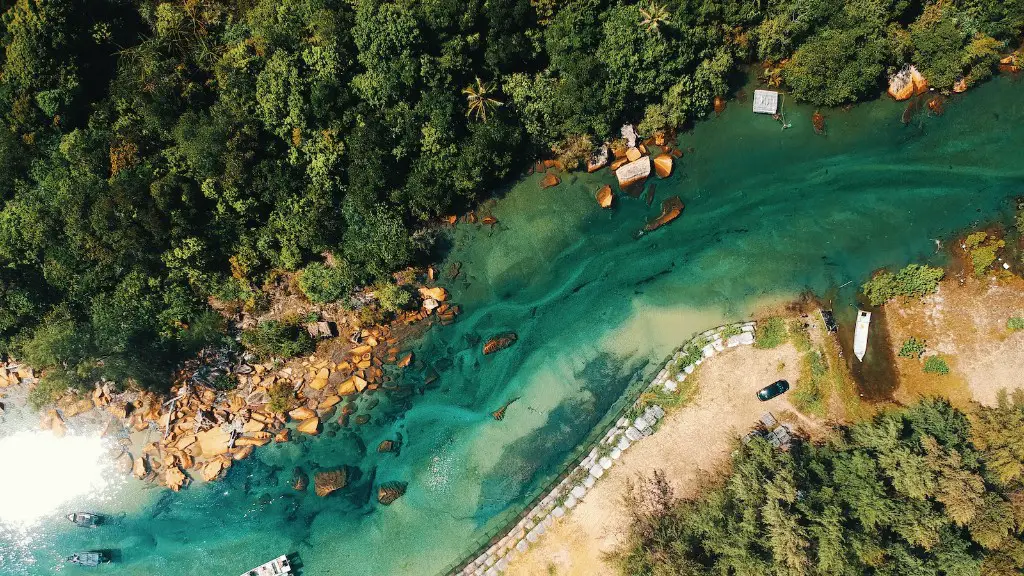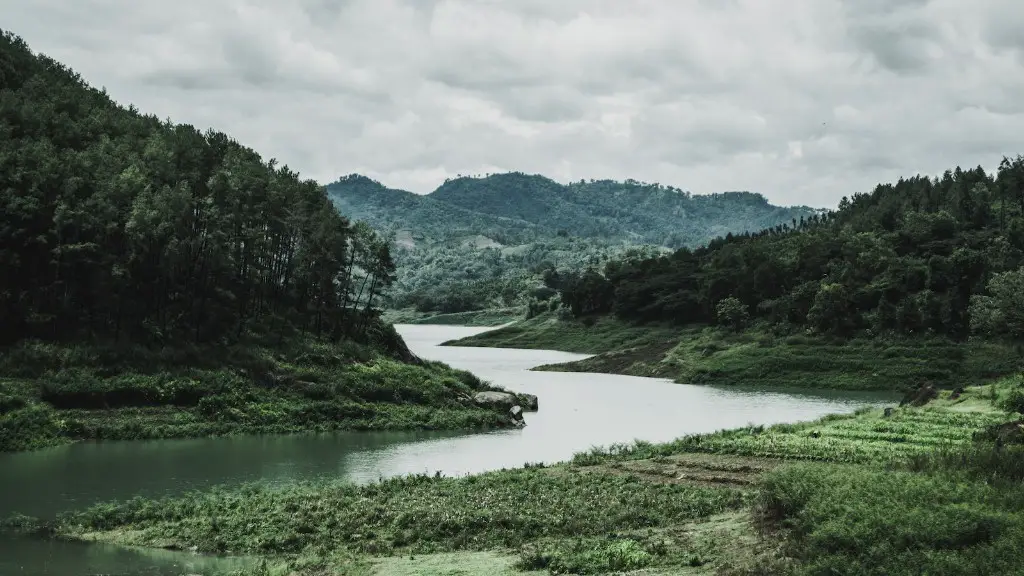The mighty Mississippi River is home to scores of meandering sandbars and deltas, the natural phenomena created when sediment is swept downstream and deposited in eddies or shifts in the water flow. The growing sandbars create ever-changing passageways for barges and pleasure craft, offering shelter from the open water and remote beauty. But how are these unique environments formed?
All rivers, big and small, shape the land around them. The Mississippi River moves large amounts of sediment — bits of sand, gravel, and clay — downstream. Every meander, or bend, in the river creates an area where the current slows and some of the sediment is dropped along the banks. In these areas, the bed of the river grows in width and depth, making an islandlike formation known as a sandbar.
Under normal conditions, sandbars are built along the outer banks of the bend. As the water moves quickly on the inside edge of the bank, it carries more sediment than the slow current on the outside can keep up with. When the water reaches the outside of the bend, it slows, and the sediment it was carrying settles on the bottom. Over time, this sediment builds, creating a flat shelf-like sandbar.
A common cause of sandbar formation is a process known as avulsion. Avulsion occurs when the river is overloaded with sediment, causing it to break its banks and look for a new place to flow. This creates an area of high and low water pressure, allowing sediment to be taken out of some parts of the river and deposited on the banks. Avulsion can also cause large sandbars to form, which break off and give birth to smaller, more isolated sandbars.
When new sandbars form, established plants and animals find new homes in these unique and diverse environments. The Mississippi River’s sandbars are home to a variety of species such as eagles, herons, terns, yellow perch, bluegills and smallmouth bass. These sandbars also offer shelter and breeding grounds for many species of migratory birds.
Mississippi River sandbars are constantly changing, providing a dynamic and ever-changing environment. The width and depth of the sandbars are affected by high and low water levels, and the wind and tide can also play a role in their formation. In this way, they are constantly evolving and offer an ever-changing landscape.
Effects of Sandbars on the Mississippi River
The sandbars of the Mississippi River play a key role in controlling river flow and preventing damage caused by floods. Because the sandbars absorb some of the water, they create larger and deeper channels for the remaining water to flow through. This reduces the risk of flooding in areas near the river and can help to protect homes, businesses, and other structures.
In addition to providing flood protection, sandbars can also play an important role in slowing down the river’s sedimentation process. As sediment builds up on the bottom of the river, it can eventually cause islands or even dams to form. When sandbars line the outside of the bends, they slow down the current, giving the sediment more time to sink to the bottom before it is carried away.
Sandbars can also provide vital habitat for fish, birds, and other wildlife. The sheltered areas they offer attract a variety of species, making them key ecosystems within the larger Mississippi River system.
Factors Influencing Sandbar Formation
Various factors affect the formation and movement of sandbars in the Mississippi River. Strong winds, high and low water levels, and changes in the river’s course all play a role in the formation of these sandbars. As these conditions change, the sandbars move and change shape. In some areas, sandbars actually contribute to the formation of the river delta by trapping sediment, allowing it to build up and eventually form a new landmass.
The amount of sediment also plays an important role in the formation of sandbars. When too much sediment is present, it can cause the channel to be clogged, preventing water from flowing through. In these cases, the sandbars can actually obstruct the flow of the river, causing flooding and other problems.
The size and shape of sandbars also depend on the size and shape of the river. If the river is wider, the resulting sandbanks will usually be wider and flatter. Narrower rivers tend to have narrower sandbars.
Biological Significance of Sandbars
The sandbars of the Mississippi River are a vital habitat for many species of birds, fish, and other wildlife. The sheltered areas offer protection from predators and shelter for young fish and birds, as well as safe areas for migration. Species such as eagles, herons, and terns also benefit from the abundance of food available on the sandbars.
In addition to providing habitat, sandbars also provide a valuable source of food for both wildlife and humans. Numerous species of fish, shellfish, and other aquatic organisms use sandbars as their main source of food. Local fishermen often make use of the sandbars to harvest a variety of species such as catfish, largemouth bass, and perch.
The sandbars of the Mississippi also provide a unique and beautiful environment for recreational activities such as fishing, canoeing, and birdwatching. The diverse and ever-changing sandbars create a unique landscape that offers a variety of experiences for visitors.
Economic Significance of Sandbars
Sandbars are also key to the economic success of the Mississippi River. These sandbars provide a safe and efficient pathway for barge traffic and other vessels to navigate the river. Since the size and shape of the sandbars is constantly changing, navigation is made much easier when the river is well maintained and sandbars are properly managed.
The presence of sandbars also helps reduce problems associated with erosion and flooding. As the sandbars absorb some of the water, they create larger and deeper channels for the remaining water to flow through. This reduces the risk of flooding in areas near the river and can help to protect homes, businesses, and other structures.
Finally, the sandbars found in the Mississippi River provide a valuable source of economic activity. Fishermen benefit from the rich habitat they offer and local businesses rely on sandbar-associated activities such as bird and wildlife watching, camping, and picnicking.
Threats to Mississippi River Sandbars
While sandbars are often beneficial to the health of the river and its ecosystem, they can also become hazards if not properly maintained and managed. Human activities such as dredging and channelization can disrupt sandbar formation and cause them to erode over time. Pollutants and invasive species can also be detrimental to the health of sandbars.
In addition, the Mississippi River is vulnerable to changing water levels, strong currents, and strong winds that can disrupt the formation and structure of sandbars. If the river rises to flood stage, the sandbars can break apart or become submerged, affecting the habitats they provide for wildlife and the safety of boats in the area.
Finally, sandbars are also vulnerable to the impacts of climate change. Rising temperatures and shifting precipitation patterns can cause changes in soil composition and water levels, resulting in changes to sandbar formation and erosion.





